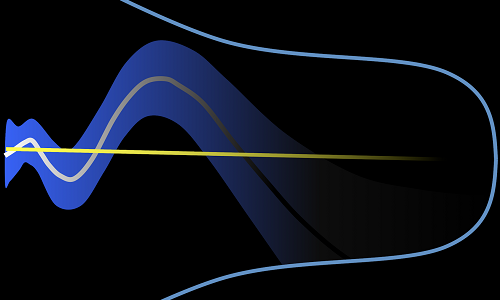An international research team, including astronomers from the University of Portsmouth, finds evidence of dynamical dark energy. They found the nature of dark energy may not be the cosmological constant introduced by Albert Einstein 100 years ago, which is crucial for the study of dark energy.
London (ISJ) – An international research team, including astronomers from the University of Portsmouth, has revealed evidence of dynamical dark energy.
The discovery, recently published in the journal Nature Astronomy, found that the nature of dark energy may not be the cosmological constant introduced by Albert Einstein 100 years ago, which is crucial for the study of dark energy.
“We are excited to see that current observations are able to probe the dynamics of dark energy at this level, and we hope that future observations will confirm what we see today,” said lead author of the study Professor Gong-Bo Zhao, from the Institute of Cosmology and Gravitation (ICG) at the University of Portsmouth and the National Astronomical Observatories of China (NAOC).
“Since its discovery at the end of last century, dark energy has been a riddle wrapped in an enigma. We are all desperate to gain some greater insight into its characteristics and origin. Such work helps us make progress in solving this 21st Century mystery,” co-author Professor Bob Nichol, Director of the ICG, said.
Revealing the nature of dark energy is one of key goals of modern sciences. The physical property of dark energy is represented by its Equation of
In the traditional Lambda-Cold Dark Matter (LCDM) model, dark energy is essentially the cosmological constant, i.e., the vacuum energy, with a constant EoS of -1. In this model, dark energy has no dynamical features.
In 2016, a team within the SDSS-III (BOSS) collaboration led by Professor Zhao performed a successful measurement of the Baryonic Acoustic Oscillations (BAO) at multiple cosmic epochs with a high precision.
Based on this measurement and a method developed by Professor Zhao for dark energy studies, the team found an evidence of dynamical dark energy at a significance level of 3.5 sigma. This suggests that the nature of dark energy may not be the vacuum energy, but some kind of dynamical field, especially for the quintom model of dark energy whose EoS varies with time and crosses the -1 boundary during evolution, according to NAOC.
The dynamics of dark energy needs to be confirmed by next-generation astronomical surveys. The team points to the upcoming Dark Energy Spectroscopic Instrument (DESI) survey, which aims to begin creating a 3D cosmic map in 2018.
In the next five to ten years, the world largest galaxy surveys will provide observables which may be key to unveil the mystery of dark energy.


